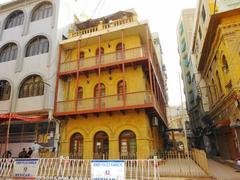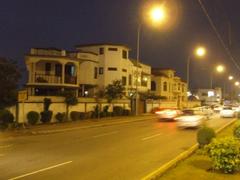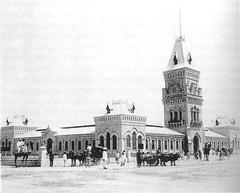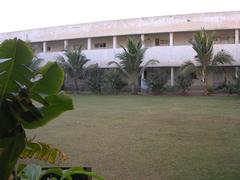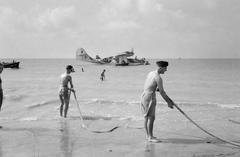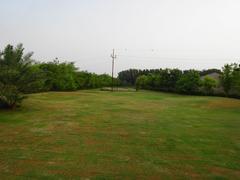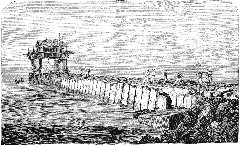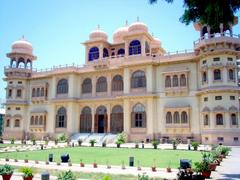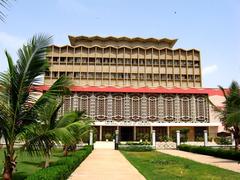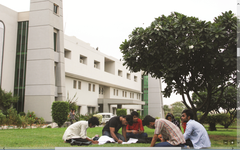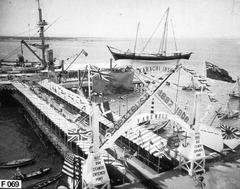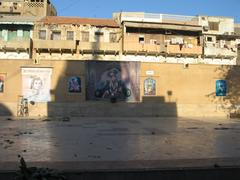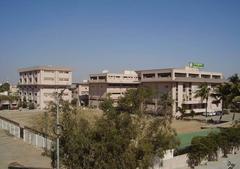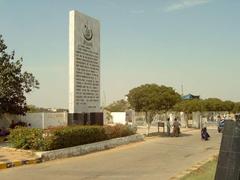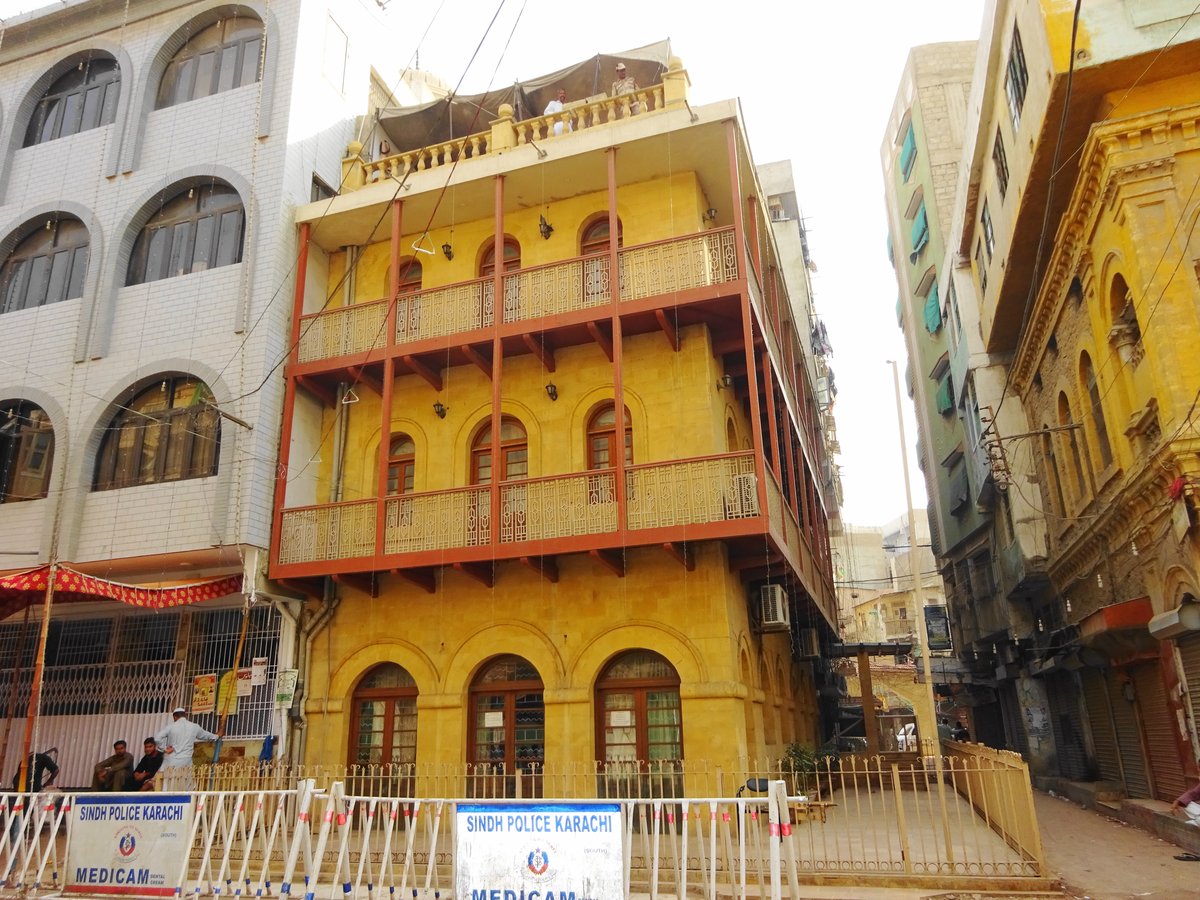
Wazir Mansion Karachi: Visiting Hours, Tickets, and Historical Significance
Date: 14/06/2025
Introduction to Wazir Mansion Karachi
Wazir Mansion, located in Karachi’s historic Kharadar district, is a cornerstone of Pakistan’s national heritage and pride. Most notably, it is the birthplace of Muhammad Ali Jinnah, the founder of Pakistan, making it a revered site for both locals and visitors. Constructed in the late 19th century, the mansion is a prime example of colonial-era architecture, characterized by its robust stone masonry, intricate woodwork, and adaptations to Karachi’s coastal climate. Today, it serves as a museum and cultural center, preserving Jinnah’s legacy and acting as a beacon of education, community engagement, and national identity.
Visitors to Wazir Mansion are offered a comprehensive experience, with access to original furnishings, Jinnah’s personal belongings, historical artifacts, and an extensive public library. Its prime location places it among Karachi’s rich cultural landscape, alongside notable sites like the Quaid-e-Azam Mausoleum and Mohatta Palace.
This guide provides detailed insights into Wazir Mansion’s history, architecture, visiting hours, ticketing, accessibility, and ongoing preservation. Whether you are a student, a history enthusiast, or a traveler, Wazir Mansion offers a unique and immersive journey into Pakistan’s origins. For current updates, refer to the Sindh Culture Antiquities website, TravelerTrails, and Discover Walks.
History and Architectural Significance
Origins and Construction
Built in the mid-19th century by Wazir Ali Ponawala, Wazir Mansion reflects the colonial architectural style that defined Karachi during the British Raj. The mansion’s robust stonework, wooden balconies, and high ceilings were thoughtfully designed to suit Karachi’s hot, humid climate. Initially serving as a private residence, it soon became an integral part of the city’s social and commercial fabric (Sindh Culture Antiquities).
Birthplace of Muhammad Ali Jinnah
On December 25, 1876, Muhammad Ali Jinnah was born at Wazir Mansion. This pivotal event established the mansion as a symbol of Pakistan’s independence movement and a site of national pilgrimage (Sindh Culture Antiquities).
Architectural Features
Wazir Mansion was constructed between 1860 and 1870, showcasing Indo-Saracenic influences. Designed by architect H. Sohak, the mansion employs tile masonry with lime and jute mortar for durability. The three-storey structure includes decorative woodwork, elegant balconies, and distinctive tilework (Graana; TravelerTrails; Evendo).
Key features include:
- Three main floors plus a basement, connected by a period staircase.
- Ground floor: public library and reading room.
- First and second floors: museum galleries, including Jinnah’s birth room with original furnishings.
- Third floor: custodian’s office and washrooms.
Walls are adorned with rare photographs and oil paintings, including a prominent portrait of Jinnah by Tajamul Hussain.
Museum Exhibits and Collections
Thematic Galleries
- Birth Room: Preserved as Jinnah’s birthplace, with his original bed, dressing table, and period furniture.
- Personal Artifacts Room: Displays include Jinnah’s office chair, writing desk, and Governor-General-era furniture.
- Memorial Room: Features an oil painting, a marble-inscribed map of Pakistan, and memorabilia.
The museum houses nine showcases featuring Jinnah’s personal effects, such as clothing marked with his initials “M.A.J.” (Graana).
Library and Reading Room
The ground floor library contains around 5,000 books on Pakistan’s history, law, and politics, including volumes personally owned and annotated by Jinnah. The reading room also preserves historic newspapers and documents (TravelerTrails).
Photographic and Documentary Archives
Rare photographs, letters, and documents trace Jinnah’s life and the independence movement, providing an educational and immersive experience (Evendo).
Visiting Hours, Tickets, and Facilities
- Location: Barkati Street (formerly Chaaghla Street), Kharadar, Karachi, Sindh, Pakistan.
- Visiting Hours: 9:00 AM to 5:00 PM, six days a week (closed Wednesdays). Confirm current timings before visiting (Sindh Culture Antiquities).
- Ticket Prices:
- Adults: Rs. 20
- Children (6–12 years): Rs. 10
- Foreigners: Rs. 300
- Student groups: Free (for study/research)
- Ticket Purchase: Available at the entrance booking office; advance booking and guided tours can be arranged.
- Guided Tours: Highly recommended and available upon request.
- Accessibility: The ground floor is wheelchair accessible; staff assistance is available, but upper floors may have limitations due to the building’s historic nature.
- Photography: Allowed in designated areas; flash use may be restricted to protect artifacts.
- Facilities: Washrooms, air conditioning, reading room, and a museum shop are available.
For more travel and accessibility tips, see Apricot Tours.
Educational Outreach and Community Engagement
Wazir Mansion plays a key role in educational outreach, hosting school visits and community programs. Students from Karachi’s schools, including Karachi Port Trust (KPT) institutions, regularly participate in guided briefings and explore the library’s extensive resources (KPT Events). The site is a hub for national celebrations, especially on Jinnah’s birth anniversary (December 25) and Pakistan’s Independence Day (August 14), drawing large crowds for commemorative events (Discover Walks).
Preservation and Restoration Efforts
Declared a protected monument in 1953 and a national monument in 1979, Wazir Mansion is maintained by the Department of Archaeology and Museums. Major renovations have included:
- 1953: Museum inauguration.
- 2002–2010: Restoration projects totaling over Rs. 25 million, including anti-termite and moisture control, and facility upgrades (Dawn; Dawn).
- Ongoing Maintenance: Includes climate control, artifact preservation, and regular repairs.
Preservation Challenges
- Environmental Threats: Karachi’s humid, saline climate requires constant vigilance.
- Urban Encroachment: Pollution and traffic vibrations contribute to building wear.
- Funding Constraints: Budgetary delays can impede maintenance.
- Visitor Impact: Large crowds during national events increase wear and tear.
Private initiatives are being explored to support public preservation efforts (The Express Tribune).
Integration with Karachi’s Cultural Landscape
Wazir Mansion is part of a broader heritage network in Karachi, close to sites like Empress Market, Mohatta Palace, and the Quaid-e-Azam Mausoleum (Wikipedia: List of cultural heritage sites in Karachi). Visitors can plan a comprehensive cultural tour, exploring the city’s colonial and contemporary history.
Travel Tips and Visitor Recommendations
- Visit during cooler months (October–March) and early in the day to avoid crowds.
- Wear comfortable footwear for navigating wooden staircases and uneven floors.
- Use secure modes of transport, especially when traveling in the Kharadar area (Apricot Tours).
- Respect preservation guidelines and avoid touching exhibits.
- Purchase books or souvenirs from the museum shop to support conservation.
Visuals and Interactive Content
For an enhanced experience, visitors can find high-quality images and virtual tours on official heritage websites. Use descriptive alt tags (e.g., “Wazir Mansion Karachi historical site,” “Muhammad Ali Jinnah birthplace room”) for accessibility and SEO. Interactive maps and travel guides are also available online.
Frequently Asked Questions (FAQs)
Q: What are the visiting hours for Wazir Mansion?
A: 9:00 AM to 5:00 PM, six days a week; closed on Wednesdays.
Q: How much are the entrance tickets?
A: Rs. 20 for adults, Rs. 10 for children (6–12 years), Rs. 300 for foreigners; free for student groups.
Q: Are guided tours available?
A: Yes, with prior arrangement through official channels.
Q: Is photography permitted?
A: Photography is allowed in designated areas; avoid flash photography near sensitive artifacts.
Q: Is the museum accessible for differently-abled visitors?
A: The ground floor is accessible; upper floors may have limitations, but assistance is available.
Q: What is the best time to visit?
A: Weekdays and non-holiday periods are ideal to avoid crowds.
Conclusion
Wazir Mansion stands as a vital cultural and historical treasure in Karachi, connecting visitors to Pakistan’s founding father and the nation’s formative years. Its architectural beauty, curated exhibits, and educational programs make it an essential stop for anyone interested in South Asian history. Despite the challenges of preservation, ongoing efforts by government and private stakeholders ensure the mansion’s legacy endures for future generations.
For updates, download the Audiala mobile app, explore related posts, and follow official social media channels. Plan your visit and take part in the celebration of Pakistan’s heritage at Wazir Mansion.
Sources and Further Reading
- Sindh Culture Antiquities
- Graana: Discover the Fascinating Trivia of Wazir Mansion
- TravelerTrails: Places to Visit in Karachi – Wazir Mansion
- Discover Walks: Top 10 Interesting Facts about Wazir Mansion
- KPT Events
- Dawn: Wazir Mansion Then and Now
- Apricot Tours: How to Travel in Karachi as a Tourist
- Visit Silk Road: Wazir Mansion Museum
- Evendo: Wazir Mansion Quaid-e-Azam Place
- Wikipedia: List of cultural heritage sites in Karachi
- The Express Tribune: National Heritage
- Lonely Planet: Wazir Mansion
- Karachi.com: Attractions
- Department of Archaeology and Museums, Government of Pakistan
